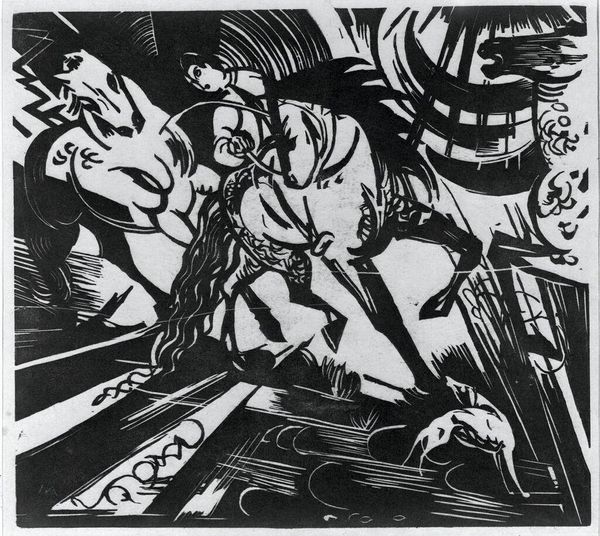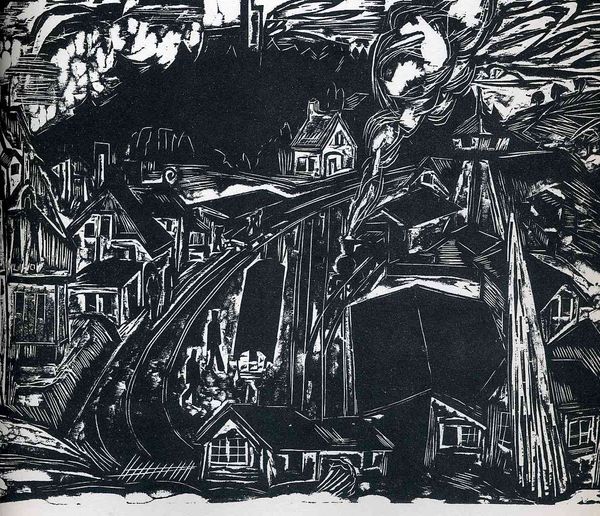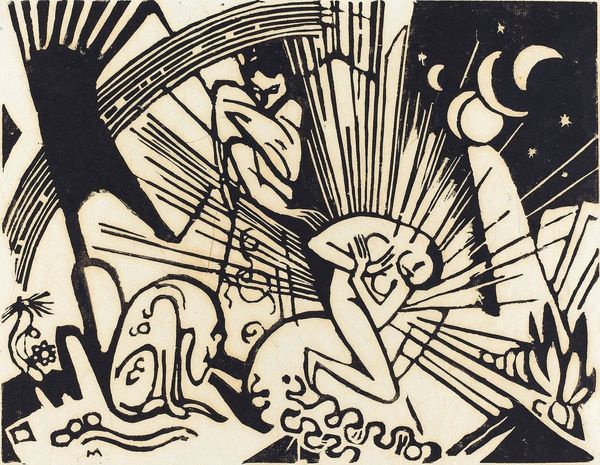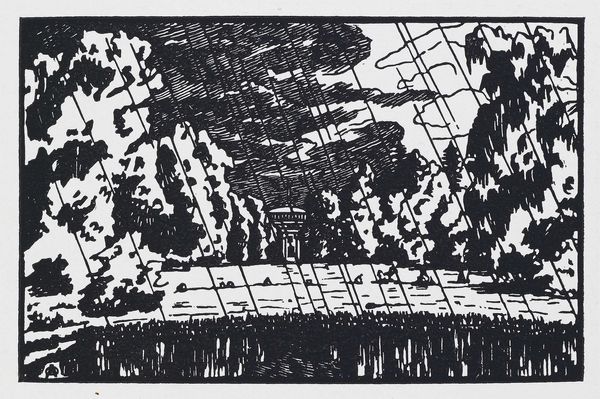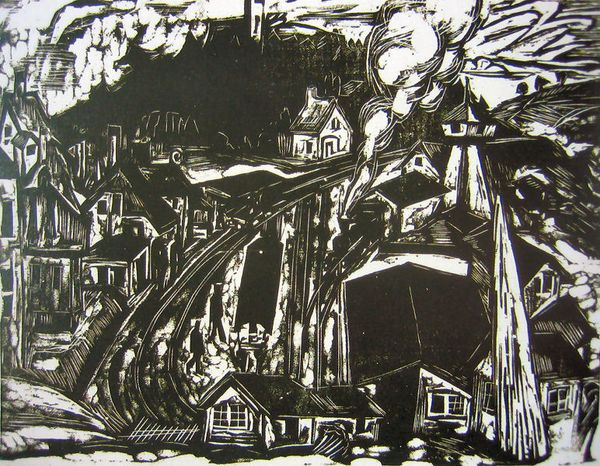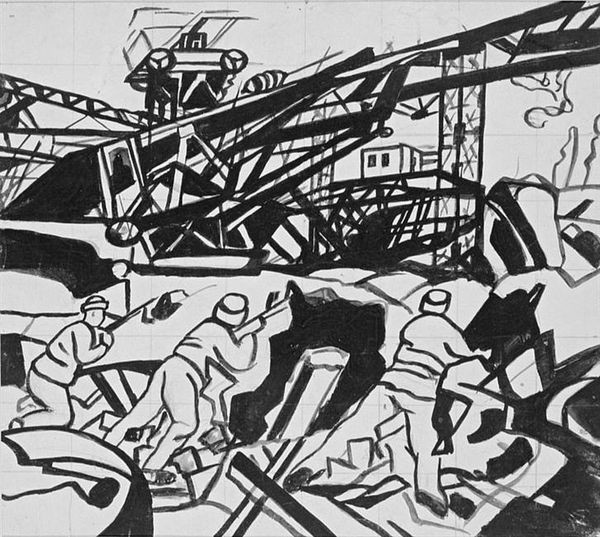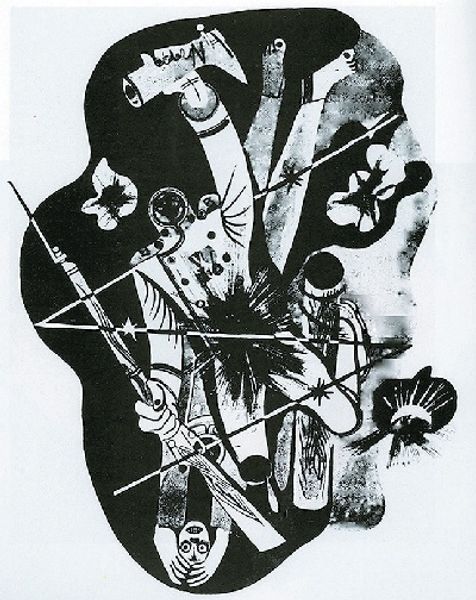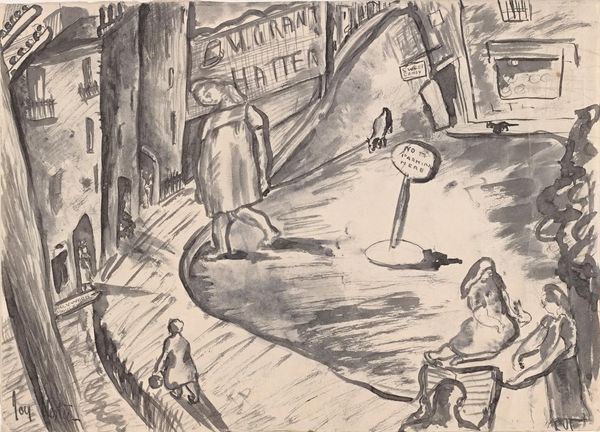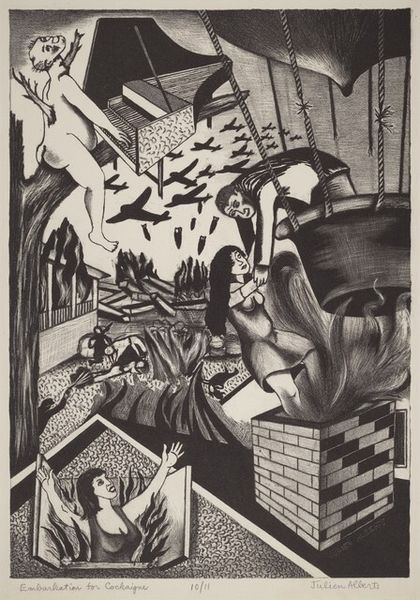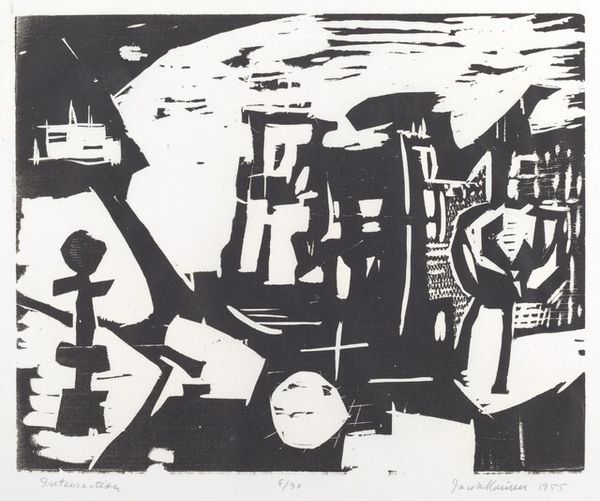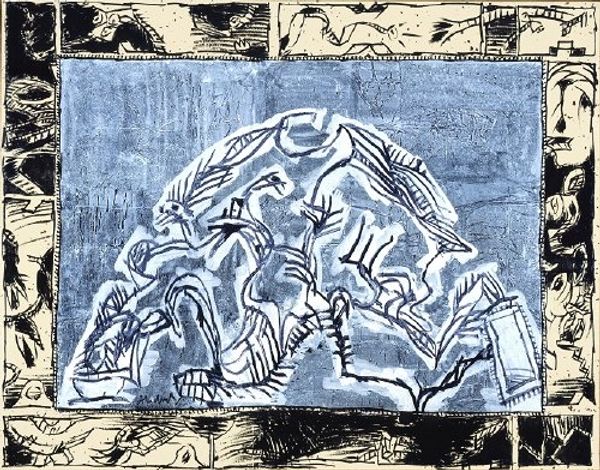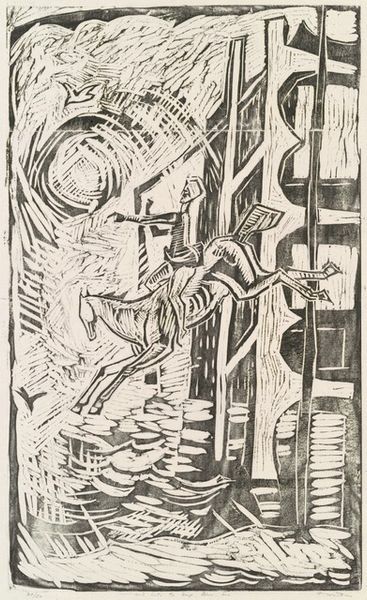
drawing, ink
#
drawing
#
figuration
#
ink
#
geometric
#
futurism
#
monochrome
Copyright: Public domain
Editor: So this ink drawing by Umberto Boccioni is titled 'Drawing After 'States of Mind: The Farewells'', and it certainly has a chaotic energy about it. What really jumps out at me is how the monochrome palette intensifies the fragmentation and the sense of movement. What do you make of it? Curator: This work encapsulates Futurism's complex relationship with modernity, technology, and emotion. Consider the historical context: early 20th-century Italy, a period of rapid industrialization and social upheaval. Futurists like Boccioni embraced this dynamism, attempting to depict it through fragmented forms and lines evoking speed and force. What emotions do you think Boccioni was trying to convey here, particularly considering the title relates to 'farewells?' Editor: I can almost feel the intense emotions linked to separation and departure through its chaotic design! So it’s less about literally representing figures, and more about conveying those psychological and societal feelings, right? Curator: Precisely. The fragmented figures suggest the disorientation of modern life, and the emotional turmoil that comes with constant change, departure and transition. How do you see this work engaging with the public sphere of its time, especially given Futurism's explicit manifesto? Editor: Well, Futurism definitely sought to shock and provoke, to disrupt the traditional art establishment. So I imagine this kind of emotionally charged abstraction challenged viewers, pushing them to grapple with the anxieties and excitements of a rapidly changing world. It must have been a statement on the purpose and responsibility of art itself. Curator: Indeed! And thinking about museums and galleries as institutions, how do you feel works like this affect our understanding and appreciation of modern and contemporary art today? Editor: I guess, seeing something this intense from over a century ago, it encourages a more thoughtful approach, showing me how art can act as a kind of mirror for society’s deepest feelings. Curator: It’s definitely thought-provoking to consider the relationship between the socio-political moment and how it’s reflected in art.
Comments
No comments
Be the first to comment and join the conversation on the ultimate creative platform.
